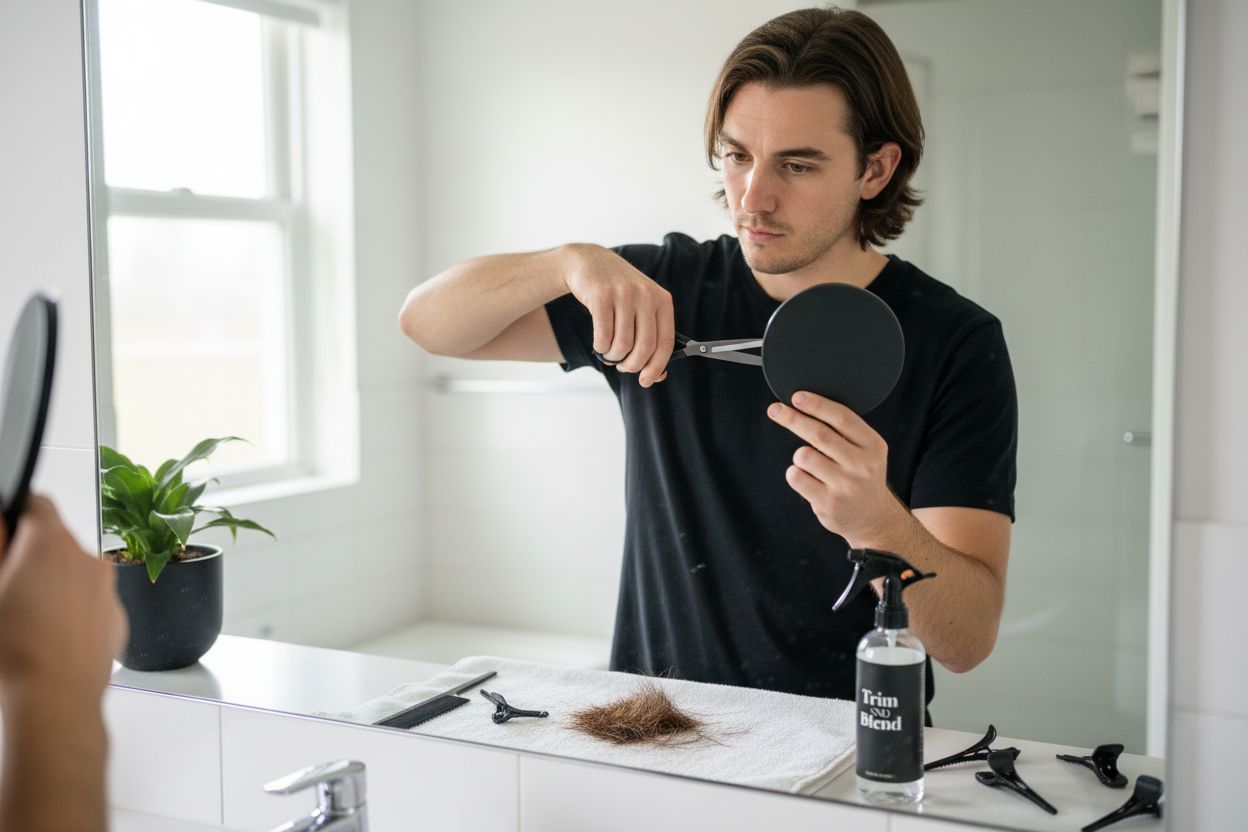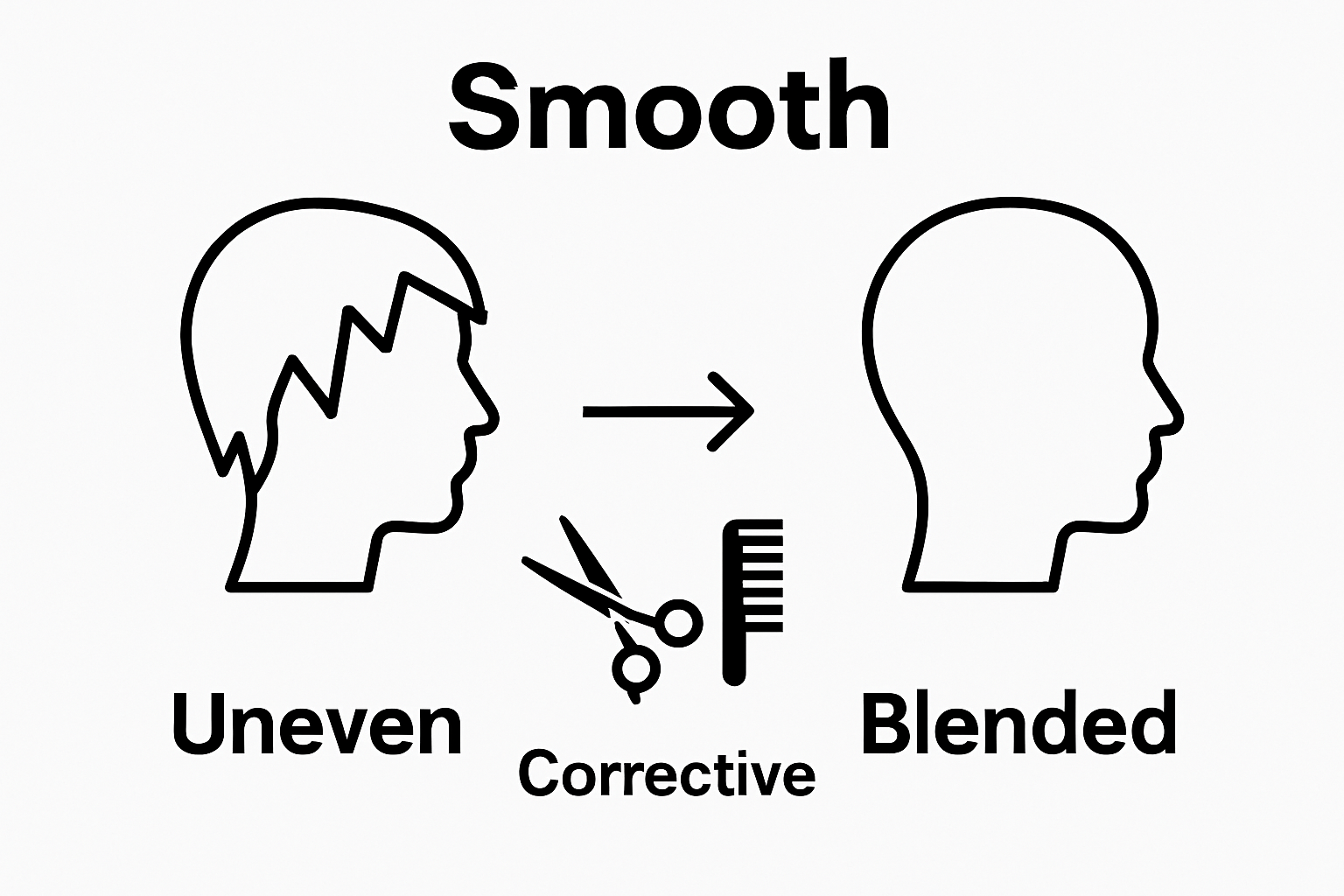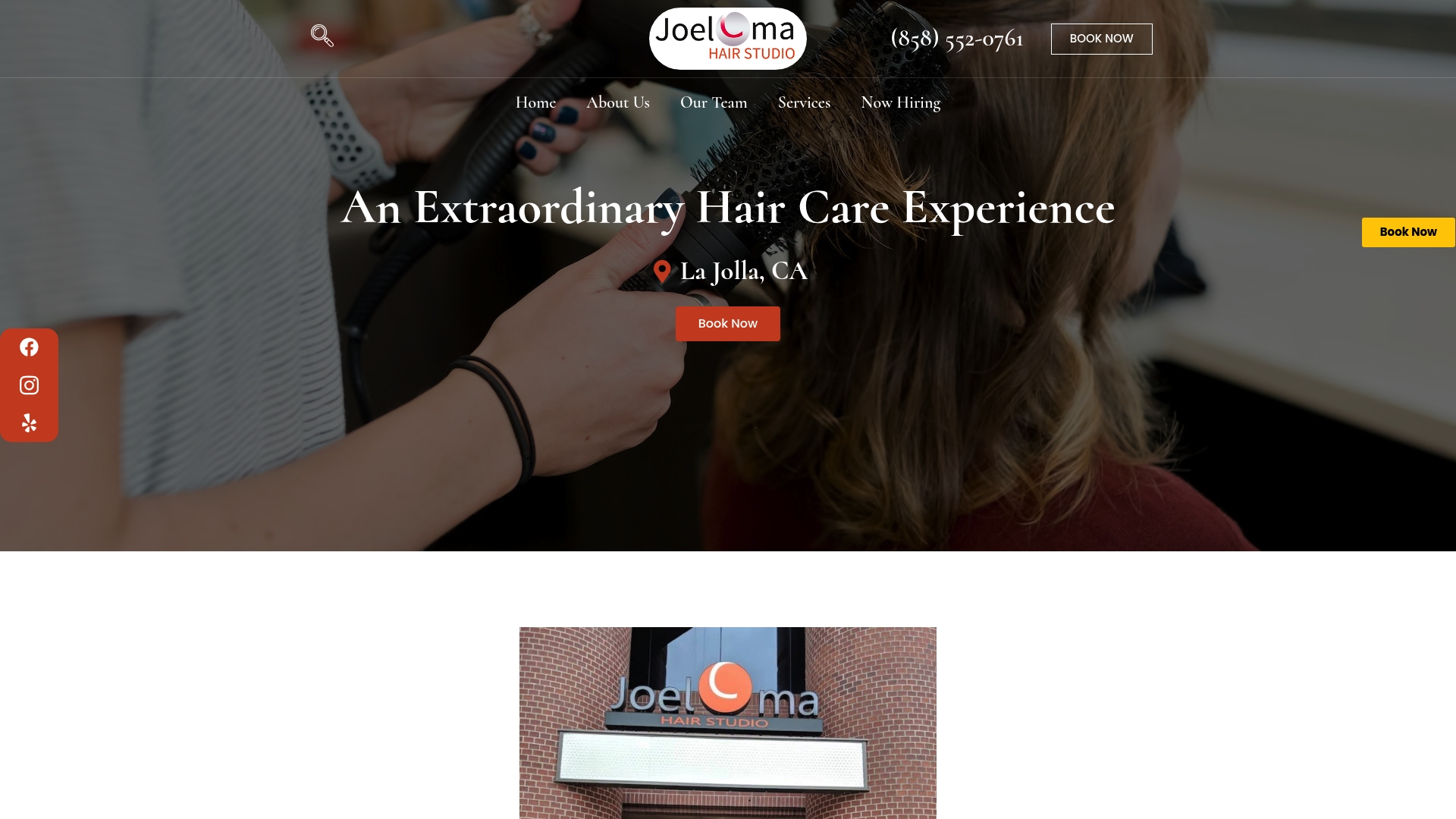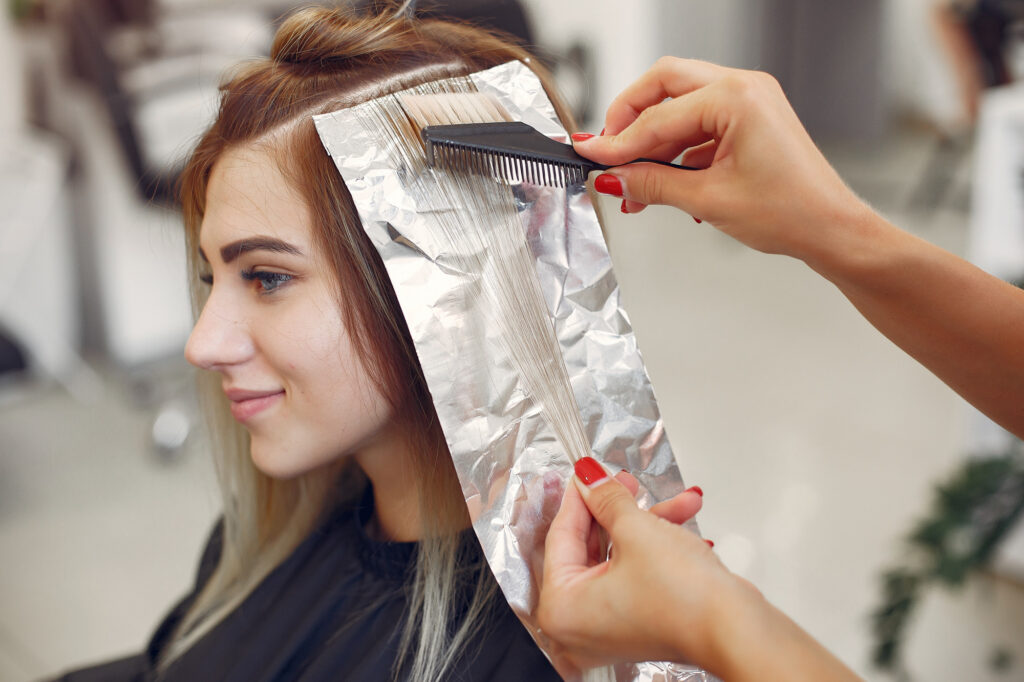A bad haircut can feel like a total disaster. Nearly 63 percent of people admit to panicking after a chop gone wrong. That number might sound high, but the real shock is most botched cuts have a simple fix when you know what to look for. So while the mirror may show chaos, what happens next could be the smartest rescue your hair has ever seen.
Table of Contents
- Step 1: Assess The Damage And Decide On A Solution
- Step 2: Gather Your Tools For Quick Fixes
- Step 3: Trim And Blend For A Natural Look
- Step 4: Style Effectively To Disguise Flaws
- Step 5: Consult A Professional For Final Touches
Quick Summary
| Key Point | Explanation |
|---|---|
| 1. Assess the damage thoroughly | Examine your haircut from multiple angles to determine specific issues and critical areas for correction. |
| 2. Gather professional tools | Use high-quality scissors, mirrors, and styling products to make effective home adjustments when repairing your haircut. |
| 3. Trim carefully for blending | Cut small sections at an angle to create soft edges, which helps blend unevenness and improve overall appearance. |
| 4. Style creatively to disguise flaws | Use volumizing and texturizing products and hairstyles like braids or updos to camouflage uneven layers effectively. |
| 5. Consult a professional if needed | If home fixes aren’t sufficient, seek a skilled stylist for solutions tailored to your hair’s condition and aesthetic goals. |
Step 1: Assess the Damage and Decide on a Solution
When a bad haircut strikes, your first instinct might be panic. Stop. Take a breath. Assessing the damage carefully will help you determine the most strategic path forward for fixing your hair mishap. Professional stylists recommend examining your cut from multiple angles using multiple mirrors to understand the full scope of the problem.
Carefully analyze specific issues with your haircut. Are you dealing with uneven layers, too-short sections, choppy texture, or an overall shape that does not complement your features? Some problems require minor corrections while others might necessitate more comprehensive solutions. Professional intervention is often the smartest first step when significant structural issues exist.
Your assessment should include several critical evaluation points. Consider the length discrepancies, texture inconsistencies, and how dramatically the cut differs from your original style. Ask yourself key questions: Can this be fixed with professional reshaping? Would strategic styling techniques help minimize the visual impact? Are you comfortable waiting for natural hair growth, or do you need an immediate solution?
Depending on the severity, you have multiple potential approaches. For minor issues like slight unevenness or unwanted texture, scheduling a precision trim with a skilled stylist can restore balance. More significant problems might require more creative solutions such as layering techniques, texturizing, or even temporary styling strategies that camouflage structural challenges.
Documented by Professional Hair Stylists Association, experienced professionals recommend the following verification checklist when assessing a bad haircut:
- Measure length variations across different sections
- Evaluate overall shape and symmetry
- Analyze how current cut complements facial structure
- Determine potential correction complexity
Remember that hair is resilient and temporary. While a bad cut can feel devastating in the moment, skilled stylists can almost always provide remedial solutions that restore your confidence and style.
Step 2: Gather Your Tools for Quick Fixes
Before attempting any hair rescue mission, assembling the right tools is crucial. Professional stylists understand that precision instruments can make the difference between a disastrous home correction and a salvageable style. Your toolkit will serve as your lifeline in transforming a haircut gone wrong.
Start by collecting professional-grade hair cutting scissors with sharp, clean blades. Household scissors are a definite no these tools can cause uneven and jagged cuts that worsen your hair situation. Look for scissors specifically designed for hair trimming, which have precise cutting edges and ergonomic handles. Professional styling scissors typically feature micro-serrated edges that help create clean, smooth lines without causing additional damage.
Mirrors are another essential component of your hair repair arsenal. Position yourself in a well-lit area with access to multiple mirrors allowing you to view your hair from various angles. A handheld mirror alongside a wall mounted or bathroom mirror provides comprehensive visibility, helping you make strategic and accurate adjustments. Natural daylight provides the most accurate color and texture assessment, so positioning near a window can offer optimal lighting conditions.
Additional critical tools include fine-tooth combs for precise sectioning, hair clips to manage different hair lengths, and styling products that can help camouflage minor imperfections. Men’s Hair Styling Experts recommend having texturizing products and volume-enhancing sprays on hand to help blend uneven sections and create visual balance.
Your toolkit verification checklist should include:
- Sharp hair cutting scissors
- Multiple mirrors with good lighting
- Fine-tooth comb
- Sectioning clips
- Texturizing or volumizing styling products
Remember that while these tools can help minor corrections, significant haircut disasters require professional intervention. Approaching home fixes with patience, careful observation, and the right equipment increases your chances of successfully salvaging your hairstyle.
This table summarizes essential tools for repairing a bad haircut at home, including their specific purpose in the correction process.
| Tool | Specification/Type | Purpose |
|---|---|---|
| Hair cutting scissors | Professional-grade, sharp blades | For precise, clean trimming and blending |
| Mirrors | Multiple, including handheld | For viewing hair from all angles |
| Fine-tooth comb | Narrow teeth | For sectioning and guiding each trim |
| Sectioning clips | Sturdy, adjustable | To separate hair and manage length variations |
| Styling products | Texturizing & volumizing formulas | For camouflaging and blending uneven sections |
Step 3: Trim and Blend for a Natural Look
Transforming a bad haircut requires precision, patience, and strategic cutting techniques. Your goal is to create a balanced, natural appearance that minimizes the visual impact of the original uneven or poorly executed style. Professional stylists understand that subtle adjustments can dramatically improve your overall look.
Begin by thoroughly washing and drying your hair to its natural texture. This provides the most accurate representation of your hair’s true length and movement. Sectioning is critical divide your hair into manageable quadrants using hair clips, ensuring you can work methodically and maintain symmetry. Start at the back of your head and work forward, cutting small amounts incrementally rather than making dramatic length reductions.
When trimming, always cut less than you think you need. The golden rule is removing barely quarter-inch sections at a time. Hold your scissors at a slight angle rather than cutting straight across, which creates softer, more natural-looking edges. This technique, known as point cutting, helps blend uneven layers and softens harsh lines. Use the tip of your scissors to create texture, gently snipping into the hair ends rather than making straight cuts.
Professional Hairstyling Guild recommends focusing on creating visual balance rather than perfect symmetry. Some slight variations can actually make a haircut look more natural and lived-in. Pay special attention to areas with significant length discrepancies, using your fine-tooth comb to guide precise cuts that harmonize different sections.
Here is a concise checklist summarizing the recommended requirements to verify the effectiveness of your at-home haircut correction efforts.
| Verification Item | Description |
|---|---|
| Symmetry from multiple angles | Check in multiple mirrors to ensure an even and balanced look |
| No harsh lines or dramatic differences | Inspect for visible blunt edges or sharp length transitions |
| Soft, textured edges | Use point cutting for blended, feathered ends |
| Shape complements facial structure | Confirm the cut flatters your face shape and overall appearance |

Your blending verification checklist includes:
- Check symmetry from multiple angles
- Ensure no harsh lines or dramatic length differences
- Verify soft, textured edges
- Confirm overall shape complements facial structure
Remember that hair grows approximately half an inch per month, so any minor imperfections will naturally soften over time. If you feel uncomfortable or uncertain during the process, pause and consider consulting a professional stylist who can provide expert correction.

Step 4: Style Effectively to Disguise Flaws
Strategic styling can be your secret weapon in transforming a disappointing haircut into a stylish look. When scissor precision falls short, creative styling techniques become your most powerful tool for camouflaging uneven layers, awkward lengths, and structural inconsistencies. Professional stylists understand that texture, volume, and strategic product application can dramatically reshape visual perception.
Begin by selecting styling products that add volume and texture. Volumizing mousses and texturizing sprays are game changers for creating visual balance and distracting from structural imperfections. Apply these products to damp hair, focusing on roots and mid-lengths to create lift and movement. Blow-drying with a round brush can help redistribute weight, softening harsh lines and creating the illusion of a more intentional, balanced cut.
For longer hair experiencing layering challenges, consider strategic updos and braiding techniques. Side braids, messy buns, and textured ponytails can effectively blend uneven sections while creating a deliberate, fashionable appearance. Asymmetrical styling works particularly well for cuts with unexpected length variations, allowing you to control visual perception through creative placement and strategic pinning.
Hair Styling Experts recommend experimenting with different parting techniques to minimize visual asymmetry. Switching your part from one side to another can dramatically alter how layers and lengths are perceived. Texturizing products applied to ends can help create a purposeful, tousled look that disguises less-than-perfect cutting techniques.
Your styling effectiveness verification checklist includes:
- Verify overall shape appears intentional
- Confirm no obvious length discrepancies are visible
- Check that styling creates visual balance
- Ensure hair movement looks natural and fluid
Remember that confidence is your most powerful styling tool. Even with a less-than-perfect haircut, a self-assured attitude can transform how your style is perceived. Embrace the opportunity to experiment with new looks and styling techniques that showcase your individual personality.
Step 5: Consult a Professional for Final Touches
When home remedies reach their limit, professional intervention becomes your most strategic solution. A skilled stylist can transform a problematic haircut with precision techniques that are nearly impossible to replicate at home. Their trained eye and professional tools offer a level of correction that goes beyond simple trimming and styling.
Before scheduling your professional consultation, prepare comprehensive documentation of your hair challenges. Take clear, well-lit photographs from multiple angles showing the specific areas of concern. These visual references help stylists understand exactly what needs correction. Bring these images to your appointment, along with any styling products or tools you have been using to manage the cut. This provides your stylist with a complete picture of your hair’s current condition and your attempted solutions.
During the consultation, communicate openly and specifically about your hair goals. Explain the original cut you desired, discuss what went wrong, and articulate the look you hope to achieve. Professional stylists are trained problem solvers who can often create creative solutions that transform seemingly irreparable haircuts. Be prepared to discuss potential compromise styles that might differ slightly from your original vision but still meet your aesthetic preferences.
Professional Hair Stylists Association recommends approaching professional correction with realistic expectations. Some dramatic transformations might require multiple appointments, especially if significant restructuring is necessary. Your stylist might suggest a gradual approach that allows your hair to grow and heal between more substantial modifications.
Your professional consultation verification checklist includes:
- Confirm stylist understands your specific hair challenges
- Verify proposed solution aligns with your aesthetic goals
- Discuss potential timeline for complete hair restoration
- Understand recommended maintenance and styling techniques
Remember that a bad haircut is temporary. Skilled professionals can help you navigate this challenging moment, transforming a potential styling disaster into an opportunity for creative reinvention. Trust in their expertise and remain open to innovative solutions that might surprise and delight you.
Trust the Experts to Fix Your Bad Haircut in Style
Struggling with uneven layers, texture issues, or a shape that just does not suit you? You deserve more than at-home fixes and uncertainty. At Joel C Ma Hair Studio, our team specializes in advanced correction techniques and personalized solutions for any haircut mishap. Whether you need precision reshaping, expert blending, or creative styling tips, you will find artistry and expertise that restore your confidence.

Instead of letting a disappointing cut affect your self-image, let a master stylist guide your transformation. Book your consultation today with our award-winning team and experience the creative difference. Visit our main page or explore client stories and styling ideas in our Uncategorized Archives to see results firsthand. Your next step is simple: trust your hair to experienced hands and discover your best look now.
Frequently Asked Questions
How can I assess the damage of a bad haircut?
Carefully examine your haircut from multiple angles using different mirrors. Look for length discrepancies, uneven layers, and how the cut complements your facial structure. Ask yourself if minor corrections or professional intervention is needed.
What tools do I need to fix a bad haircut at home?
Gather professional-grade hair cutting scissors, multiple mirrors for proper visibility, a fine-tooth comb, sectioning clips, and texturizing or volumizing styling products to help blend uneven sections.
What cutting technique should I use to blend a bad haircut?
Use point cutting to create softer, more natural-looking edges. Cut small amounts at a time (about a quarter inch) and hold your scissors at a slight angle. This technique helps to blend uneven layers and avoids harsh lines.
How can I style my hair to disguise a bad haircut?
Use volumizing mousses and texturizing sprays to add lift and movement, minimizing the appearance of structural flaws. Consider updos, braids, or changing your part to create visual balance and distract from uneven lengths.
Recommended
- Uncategorized Archives – Joel C Ma Hair Studio
- How Often to Trim Hair for a Stylish Look in 2025 – Joel C Ma Hair Studio
- Straight Hair Styling Tips for Effortless Elegance in 2025 – Joel C Ma Hair Studio
- Salon, Author at Joel C Ma Hair Studio
- Damaged Hair Care Guide 2025: Restore, Protect & Grow | MyHair | MyHair





